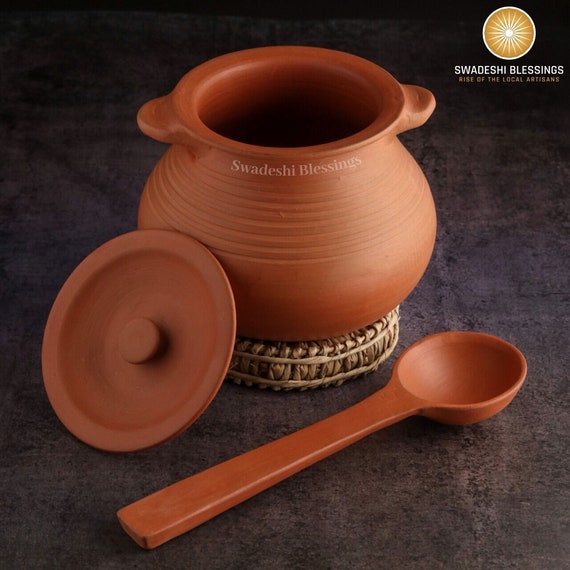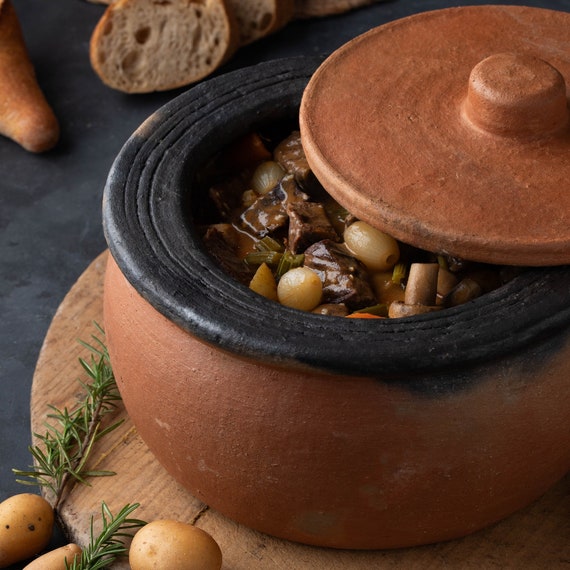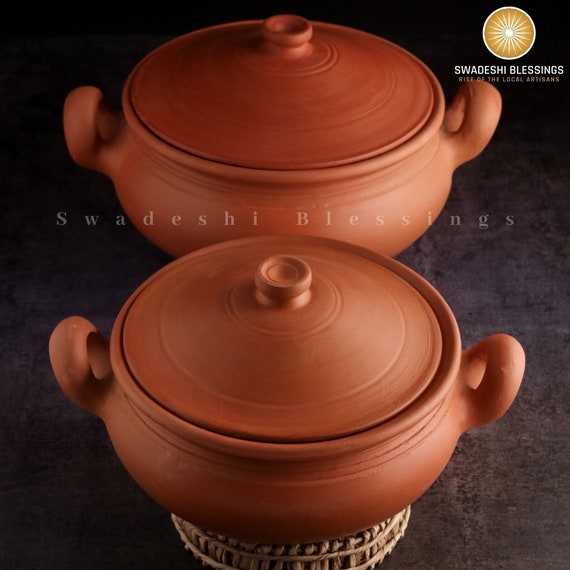Understanding Unglazed Clay Cooking
Cooking in UNGLAZED CLAY POTS is an art that has stood the test of time. These pots, cherished for their unique properties, offer a distinct approach to preparing food that enhances flavors and nutritional value. Unlike their glazed counterparts, unglazed pots allow for better moisture retention and even heat distribution, creating a cooking environment that promotes tenderness and depth in every dish.
Across various cultures, from traditional Mediterranean to Native American cuisines, unglazed clay pots have a rich history of usage. They are often celebrated for their ability to create delicious stews, savory roasts, and flavorful baked dishes that connect us to our culinary roots.
As we dive deeper into the world of unglazed clay cooking, we will explore their benefits, preparation techniques, and the best practices to maximize your culinary experience. Join us on this flavorful journey!




Mastering the Art of Seasoning Your Unglazed Clay Cooking Pot for Delicious Meals
The Benefits of Cooking in Unglazed Clay Pots
Cooking in unglazed clay pots is like stepping into a time-honored tradition that brings numerous advantages to the modern kitchen. Let’s explore the key benefits of incorporating these rustic cooking vessels into your culinary repertoire.
Retention of Heat and Moisture
Unglazed clay pots are unique in their ability to retain heat and moisture. The porous nature of the clay allows it to absorb and gradually release steam, which creates a self-basting effect. This means dishes cook evenly while staying moist and flavorful. For example, a hearty vegetable stew can simmer away, developing rich flavors without the need for constant supervision.
Enhanced Flavor Profiles
Cooking in these pots doesn’t just keep your dishes moist; it also elevates their flavors. The clay enhances the natural essence of your ingredients, allowing them to meld together beautifully. Think of your favorite chili recipe. When prepared in a clay pot, the spices become more pronounced, with a subtle earthiness that just can’t be replicated in a standard pot. Many seasoned cooks swear by this method for achieving that “secret ingredient” flavor everyone craves.
Healthier Cooking
For those concerned about the dangers of chemical-laden cookware, unglazed clay pots offer a healthier alternative. Made from natural materials and free of harmful chemicals like Teflon, these pots provide peace of mind while you cook. They don’t leach any substances into your food, allowing you to enjoy nutritious meals straight from the earth. For instance, traditional-style baked chicken cooked in clay retains its natural juices and nutrients, resulting in a dish that’s not only delicious but also nutritious.
Versatility
Another exciting benefit is the versatility of unglazed clay pots. They can go from the stovetop to the oven, and some can even be placed directly over an open flame. This adaptability lets you explore various cooking techniques—whether you’re simmering soups, roasting meats, or even baking bread. This makes them invaluable in a wide range of culinary landscapes.
Eco-Friendly Option
Lastly, unglazed clay pots are often more environmentally friendly than many modern cooking materials. They are crafted from natural resources and are biodegradable at the end of their life cycle. Incorporating these pots into your kitchen showcases a commitment to sustainable cooking practices, benefitting both your meals and the planet.
With all these advantages, it’s clear that unglazed clay pots are worthy of a more prominent place in your kitchen. But before you start cooking, proper preparation of your pot is crucial. Let’s explore how to get your unglazed clay pot ready for its culinary debut.
Preparing Your Unglazed Clay Pot
Before you dive into the world of unglazed clay cooking, it’s essential to prepare your pot correctly. This ensures not only a successful cooking experience but also long-lasting performance. Let’s explore the necessary steps for prepping your clay pot.
Soaking Your Clay Pot
The first step in preparing your unglazed clay pot is soaking it in water. This simple task not only cleans the pot but also helps to prevent cracking during cooking. Immerse the pot in water for about 30 minutes to an hour before use. The porous nature of the clay will absorb moisture, which is vital for ensuring that your food cooks evenly and stays juicy. This soaking method allows the pot to create steam during cooking, adding depth to your dishes.
Seasoning for Success
After soaking, it’s time to season your pot. Seasoning involves coating the inside of your pot with oils or fats, which helps to create a non-stick surface and enhances the flavor of your food. A popular choice is to rub the interior with a thin layer of olive oil or vegetable oil. Allow the oil to sit for about 15-20 minutes before wiping out the excess. With this simple step, you’re preparing your pot to perform at its best, ultimately enhancing the cooking process.
Initial Cooking
For your first cooking session, consider choosing simpler recipes such as rice or grains. These foods are forgiving and will help to establish a non-stick surface in your pot. Start by cooking water and salt in the pot, allowing it to heat gradually. This will help strengthen the clay and further season your pot. Over time, with each use, your pot will develop a natural patina that enhances its cooking abilities.
Maintenance for Longevity
Caring for your unglazed clay pot is as significant as preparing it. After each use, let the pot cool completely before washing it with warm water and a gentle scrub. Avoid using soap or harsh chemicals, as these can damage the natural materials. Once clean, leave it to air dry thoroughly in a well-ventilated area. To keep your pot in optimal condition, store it in a cool, dry place, ideally away from direct sunlight.
Keeping these preparation and maintenance tips in mind will help ensure your unglazed clay pot serves you well for years to come. Now that you understand how to prepare and care for your pot, let’s explore the best cooking techniques that will allow you to take full advantage of your clay cooking experience!
Best Cooking Techniques for Unglazed Clay Pots
Cooking in unglazed clay pots opens up a world of delightful culinary techniques, each designed to harness the unique properties of the clay for exceptional flavor and texture. Here, we’ll explore various methods such as slow cooking, baking, and steaming, as well as important tips to ensure perfect results every time.
Slow Cooking
One of the outstanding features of unglazed clay pots is their ability to facilitate slow cooking. The gradual, even heat retention allows flavors to meld beautifully over time. This method is perfect for creating comforting stews, soups, and braised dishes. To make the most of it:
Baking
Unglazed clay pots shine in the oven, creating a unique baking environment that enhances the taste and texture of your dishes. Their ability to evenly distribute heat makes them excellent for baking breads, casseroles, and even pizzas.
Steaming
Another fantastic method for utilizing your unglazed clay pot is steaming. This technique not only preserves the nutrients in your food but also intensifies the flavors.
Combining Techniques
The beauty of cooking in unglazed clay pots lies in their versatility. Feel free to combine methods for even more depth of flavor. For instance, you can start by browning meats on the stovetop before transferring the pot to the oven for a slow bake.
With these savvy techniques in mind, you’re well on your way to mastering the art of cooking in unglazed clay pots. Next, we’ll explore some delicious recipes that highlight the unique flavors and textures you can achieve!
Recipes to Try in Your Unglazed Clay Pot
Now that you’re equipped with an understanding of how to prepare and cook in unglazed clay pots, it’s time to bring your cooking to life with some easy and flavorful recipes. These dishes not only highlight the unique properties of clay cooking but also invite you to experiment and create delightful meals. Let’s dive into a few standout recipes that are perfect for your unglazed clay pot!
Hearty Vegetable Stew
This nourishing stew is a classic that benefits tremendously from slow cooking in clay, allowing the flavors to meld beautifully over time.
Ingredients:
Instructions:
- Soak your clay pot for at least 30 minutes.
- In the pot, layer the chopped onions and garlic, and drizzle with a bit of olive oil.
- Add the mixed vegetables, diced tomatoes, and vegetable broth. Season with Italian seasoning, salt, and pepper.
- Cover the pot and place it on low heat on the stovetop or in a preheated oven at 350°F (175°C) for 1.5 to 2 hours.
- Stir occasionally and enjoy the divine aroma as it simmers.
Garlic and Herb Roasted Chicken
Roasting chicken in an unglazed clay pot delivers a tender and juicy result thanks to the gentle steam created in the pot.
Ingredients:
Instructions:
- Soak and season your clay pot as described earlier.
- Preheat your oven to 375°F (190°C).
- Rub the chicken with olive oil, garlic, rosemary, thyme, salt, and pepper inside and out. Squeeze the juice of one lemon half inside the cavity and place the lemon halves in there as well.
- Place the seasoned chicken in the clay pot, cover, and roast in the oven for 90 minutes.
- Uncover the pot for the last 20 minutes to achieve a golden, crispy skin.
Fig and Honey Tart
For a surprise treat, this dessert showcases the excellent baking capabilities of unglazed clay.
Ingredients:
Instructions:
- Preheat your oven to 350°F (175°C).
- Soak and season your clay pot.
- Arrange the pastry in the bottom of the pot. Layer the sliced figs over the crust.
- Drizzle honey over the figs and sprinkle cinnamon on top. Dot with butter.
- Bake for about 30 minutes or until the crust is golden brown, allowing the figs to caramelize beautifully.
Steamed Dumplings
Steaming in an unglazed clay pot intensifies flavors and creates perfectly textured dumplings.
Ingredients:
Instructions:
- Mix flour with water to create a soft dough, let it rest for 30 minutes.
- Roll out the dough and fill with your chosen filling, then fold and seal.
- Add about 1 inch of water to your soaked clay pot and arrange a steaming rack above it, placing the dumplings on the rack.
- Cover the pot and steam for 15-20 minutes until cooked through.
These recipes showcase the versatility of unglazed clay pots and inspire you to get creative in your kitchen. Remember, the key to successful clay pot cooking lies in patience and exploration. As you experiment and adapt these recipes to your taste, you may discover new family favorites that highlight the natural flavors of your ingredients.
In the next section, we’ll delve into how to care for your unglazed clay pot, ensuring it remains a cherished part of your culinary toolkit for years to come!
Caring for Your Unglazed Clay Pot
Taking care of your unglazed clay pot is crucial to ensuring its longevity and optimal performance in the kitchen. With proper cleaning, storing, and maintenance practices, you can enjoy delicious meals cooked in clay for years to come. Here are some essential tips to help you care for your treasured cooking companion.
Cleaning After Use
Unlike conventional cookware, your unglazed clay pot requires gentle care after cooking. Here’s how to clean it effectively while preserving its integrity:
Proper Storage
Storing your clay pot correctly is just as vital as cleaning it. Here are some effective storage tips:
Avoiding Cracks
Cracks can be a common challenge with unglazed clay pots. To minimize the risk:
Regular Maintenance
Incorporating some routine maintenance practices can extend the life of your unglazed clay pot:
By fostering a respectful and gentle relationship with your unglazed clay pot, you not only preserve its beauty but also enhance your cooking experience. As you care for your pot, you’ll notice the gradual development of flavors and the unique character it brings to your dishes.
With these care tips in mind, you’re ready to embrace the full potential of your clay cooking journey. As we move to the next section, let’s explore the art of cooking and how to fully enjoy the delights of unglazed clay pot meals.
Embracing the Art of Clay Pot Cooking
Cooking with unglazed clay pots is not just a method—it’s an art steeped in tradition and flavor. By harnessing the unique properties of clay, you can enhance the taste and nutritional value of your meals while enjoying the process of preparing food in a natural, time-honored way. Whether you are drawn to the health benefits, the slow cooking techniques, or the rustic aesthetics, there are endless possibilities for experimentation.
Now that you have explored the benefits, preparation methods, and care for unglazed clay pots, it’s time to let your creativity shine. Dive into the delightful world of clay pot cooking by trying out the recipes provided, or create your own unique dishes. Remember, each pot has a story to tell—embrace the journey and enjoy the delicious results!





I love how these pots are eco-friendly! 🌍 It’s about time we start using stuff that’s good for us and the planet. Anyone have thoughts on the lead-free serving handi?
I use mine all the time! It’s great for keeping food warm too!
The lead-free serving handi is fantastic! Perfect for serving dishes right from the oven.
I tried the unglazed clay pot method for the first time last week and I burnt my dinner. 😂 Any tips for beginners?
Thanks! I’ll give it another shot 😊.
Yeah, and don’t forget to soak! It’s a game changer.
Start by cooking at lower temperatures! It helps prevent burning while you get used to it.
This article made me want to throw a dinner party using clay pots!👨🍳 Anyone have tips on serving?
Serve family-style! Food straight from the pot makes it feel cozy.
That sounds like a fun idea! Clay pots make great centerpieces too!
I’ve been hesitant to buy an unglazed pot because I’m not sure how to care for it. This article helped a ton! But can anyone tell me if the eco-friendly options are really worth it?
I switched to eco-friendly pots last year, and I can’t go back. They cook better and are safer.
Absolutely! Eco-friendly pots are not only good for the environment but also great for your health!
So, do you really have to soak the clay pot before using it? I’ve read mixed things online. 🤔
Yes, soaking helps prevent the pot from cracking and allows for even cooking. It’s a great step to take! 👍
Thanks! I’ll definitely try that. Just want to avoid a cooking disaster! 😂
I always soak mine for at least an hour. It really makes a difference!
Just got my lead-free clay cooking pot! Can’t wait to give it a whirl. The article was super informative. Any specific recipe suggestions?
Try a classic baked chicken! It cooks beautifully in clay.
I recommend trying a vegetable biryani—so flavorful and easy!
I love the recipes in this article! My family is obsessed with the slow-cooked chili. Anyone else tried it?
I made the chili too! So good, especially with some cornbread on the side.
That chili is a fan favorite! Glad to hear it was a hit! 🌶️
Sounds delicious! Definitely going to try that combo next time.
Can someone please explain why unglazed clay pots are better? I mean, they look nice but is the taste really that different?
Totally! Food cooked in these pots has a unique earthy flavor that you just can’t replicate with metal pots.
Great question, Lily! Unglazed clay pots enhance the flavor of the food and retain moisture better.
Interesting! I’m definitely curious to try it now.
Love this article! The section on caring for the pots is really helpful. I had no idea they needed special treatment. 😅 Can anyone share their experience with the lead-free cooking kadai?
Thanks, David! I’ll make sure to take good care of it.
I’ve been using mine for curries and it’s been fantastic! Just remember to clean it properly.
The lead-free clay cooking kadai is a great choice! It’s durable and cooks evenly.
Anyone else feel like these pots are just a total hassle? 😂 I mean, all this soaking and caring…
Maybe I need to give it a shot before I judge! 😂
It does require some extra care, but many find the flavors worth it!
I get it! But once you try it, you might change your mind. It’s like a cooking adventure!
Wow, this is so interesting! I’ve never cooked with clay before. Does anyone have a good starter recipe?
The vegetable stew is a great starter! Simple and delicious!
I recommend starting with rice! It’s super easy and you can’t mess it up.
I never thought of cooking in unglazed clay pots until I read this! 🤯 I just ordered the eco-friendly terracotta casserole from Etsy, and I can’t wait to try the recipes included in the article. Has anyone made a dish yet? What was it like?
I’m still waiting for mine to arrive! I hope it gets here soon so I can jump into cooking.
That’s awesome, Sarah! Let us know how it turns out! 😄
I made a stew in mine last week and it was so flavorful! You can definitely taste the difference.